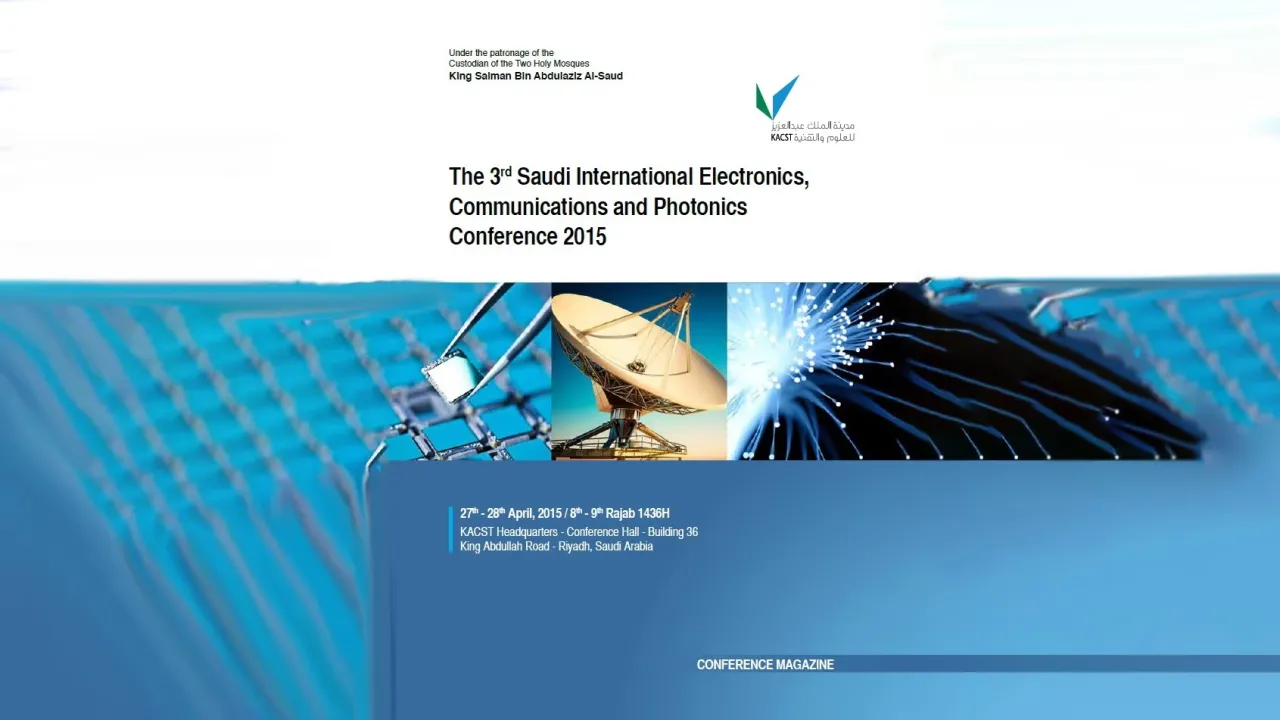
Boon S. Ooi presents a talk at the 3rd SIECPC 2015
Head of the Photonics lab Boon S. Ooi presents a talk at the 3rd Saudi International Electronics, Communications and Photonics Conference (SIECPC) 2015, held at KACST, Riyadh during April 27-28, 2015.
About
Head of the Photonics lab Boon S. Ooi presents a talk at the 3rd Saudi International Electronics, Communications and Photonics Conference (SIECPC) 2015, held at KACST, Riyadh during April 27-28, 2015.
High Performance Eye-Safe 1500-1650nm InAs/InP-based Quantum Dot/Dash Semiconductor Lasers
Abstract
Self-assembled semiconductor quantum dots (QDs) constitute a class of nanoscale materials that provide fundamental advantages compared to the dominating 2-D quantum well (QW) structures in photonic device applications. QD devices based on InAs/GaAs material system operating at emission wavelengths between 1.0 and 1.3 μm have achieved a relative maturity and many outstanding performances such as low threshold current, high temperature stability, high gain and differential gain, have already been demonstrated. For long wavelength operations in the S-C-L communication bands, particularly for the 1.55 μm window, the InAs/InP QD and quantum-dash (Qdash) material systems have been seen as the most suitable material system. Recent attempts in extending the technology of self- assembled QD on InP substrate has led to the development of InAs-based Qdashes that give the emission wavelength spans over several bands of optical telecommunication windows between 1.4 and 2.0 μm. Apart from its superior characteristics as compared to conventional quantum well structures and bulk materials, self-assembled QD/Qdash lasers have demonstrated a number of unique features like broad emission spectra which have been attributed to the carrier localization in non-interacting or spatially isolated dot/dash employing a highly inhomogeneous QD/Qdash structures. These novel semiconductor light emitters are particularly attractive for many practical eye-safe biomedical imaging and sensor applications due to their compactness and relatively low energy requirement in comparison to other state-of-art broad-spectrum light sources.
In this paper, we will discuss the recent development of InP-based QD and Qdash lasers. Improvement of the Qdash laser characteristics using various active region designs, particularly the effect of the quantum dash inhomogeneity on laser characteristics will be reviewed. At device level, we will focus our discussion on the novel broadband lasers, superluminescent diodes (SLDs), mode-locked lasers and comb lasers fabricated on these material systems.
